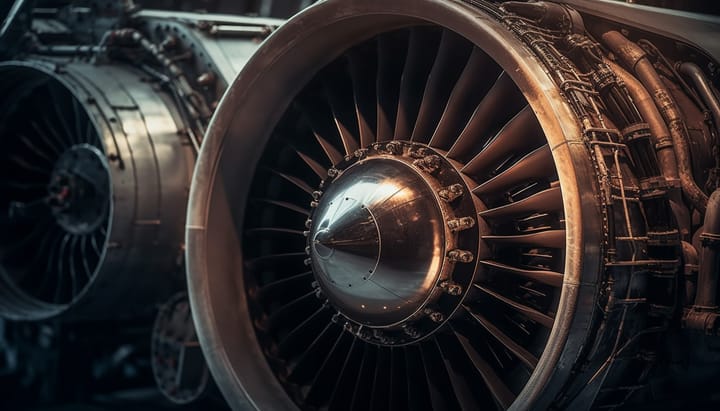Hong Kong Boeing 747-400 Excursion Highlights Pilot and Autonomous Vehicle Risks

Boeing 747‑400 Cargo Runway Excursion – Hong Kong
The flight‑data recorder shows asymmetrical nose‑wheel steering 3 s after touchdown, while the vehicle’s GPS log indicates a 2‑second premature runway entry that escaped surface‑movement‑radar detection.
| Theme | Evidence | Implication |
|---|---|---|
| Pilot‑Error Emphasis | FDR asymmetrical steering; no ATC correction | Potential revision of rollout‑steering procedures and training on differential braking |
| Ground‑Vehicle Fault Emphasis | AV‑01 deviation from programmed corridor; SMR missed incursion | Mandate dual‑layer runway‑incursion detection (SMR + ADS‑B) and certify autonomous vehicle software |
| Combined Causation | Simulation replicating trajectory with both inputs | Regulatory focus on integrated human‑machine safety systems |
The report forecasts regulatory action requiring real‑time runway‑incursion alerts and predicts a 12‑15 % premium increase for operators of 30‑year‑old freighters on high‑traffic lanes. Fleet retirement rates for Boeing 747‑400 cargo aircraft are projected to rise 18 % YoY.
Air Arabia A320 GPWS Failure – Continued Investigation
The ANSV investigation attributes the loss of terrain‑proximity alerts to a radar‑altimeter sensor fault that disabled GPWS warnings per system logic. Barometric altitude remained accurate, but the GPWS algorithm suppressed alerts when the primary radar input was invalid.
| Parameter | Observation | Interpretation |
|---|---|---|
| Radar‑altimeter data | Constant 1 500 ft reading for 12 s | Sensor head failure |
| GPWS logic | Alert suppression on invalid radar input | Design choice eliminated aural cue |
| Maintenance record | Deferred AD 2024‑16‑13, intermittent bus noise | Latent defect unaddressed |
Three comparable A320 incidents (2019‑2023) illustrate a systemic vulnerability: single‑point radar‑altimeter reliance. Airbus plans a 2026 retrofit for dual‑sensor radar‑altimeters; ICAO draft amendments would require fallback terrain alerts derived from barometric data.
Market impact includes a 3 % Q4 2025 capacity reduction for Air Arabia and a projected $150 million demand for dual‑sensor kits across the A320 fleet in Europe and the Middle East.
Ukrainian Light‑Aircraft Bomber‑Drone Program
The “Horynych” conversion of Skyranger Ninja 912S and Aeroprakt A‑22 airframes creates autonomous strike platforms with up to 120 kg payloads and a demonstrated 76 % mission success rate over 102 sorties.
| Metric | Value |
|---|---|
| Total sorties (2023‑Oct 2025) | 102 |
| Successful strikes | 78 (≈ 76 %) |
| Effective range | 130 km (satellite‑linked) |
| Unit cost | $45‑60 k (airframe + payload) |
Compared with Russian precision‑guided bombs (~$250‑300 k per unit) the Ukrainian platform delivers comparable destructive effect at a fraction of the cost. Scaling projections anticipate 30‑40 operational units by mid‑2026, sustaining 500 strategic strikes annually and potentially reducing Russian fuel throughput by up to 8 % per annum.
Counter‑measure trends include a 30‑45 % increase in Russian electronic‑warfare assets targeting UAV satellite bands, prompting Ukrainian development of frequency‑hopping and quantum‑resistant encryption.
There seems to be a common thread: advanced automation (autonomous ground vehicles, GPWS software, satellite‑linked drones) can amplify risk when single‑point failures intersect with human decision‑making. The B747‑400 incident underscores the need for integrated runway‑incursion detection that fuses vehicle ADS‑B with radar surveillance. The A320 GPWS case demands redundancy in primary safety sensors and algorithmic fallback to maintain situational awareness. Ukraine’s bomber‑drone effort demonstrates how purposeful redundancy (dual‑satellite links, robust airframe reinforcement) can translate low‑cost platforms into strategic assets.
Regulatory trajectories—mandatory dual‑sensor radar‑altimeters, revised GPWS logic, and certification standards for autonomous ground equipment—are converging toward a safety architecture that presumes concurrent failure modes. Industry adoption of AI‑assisted terrain monitoring and AI‑enhanced runway‑incursion analytics will likely become a baseline requirement within the next five years.



Comments ()